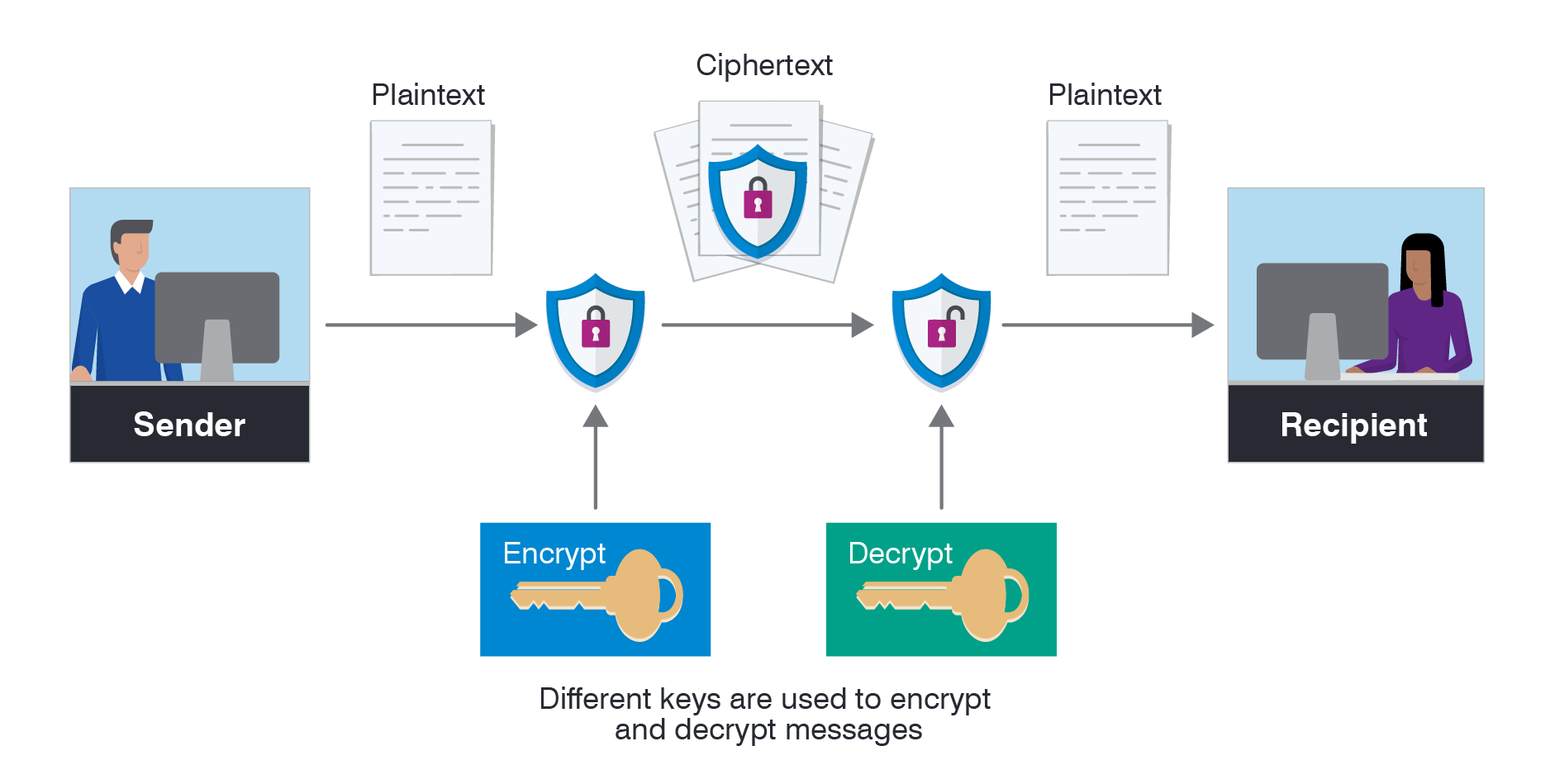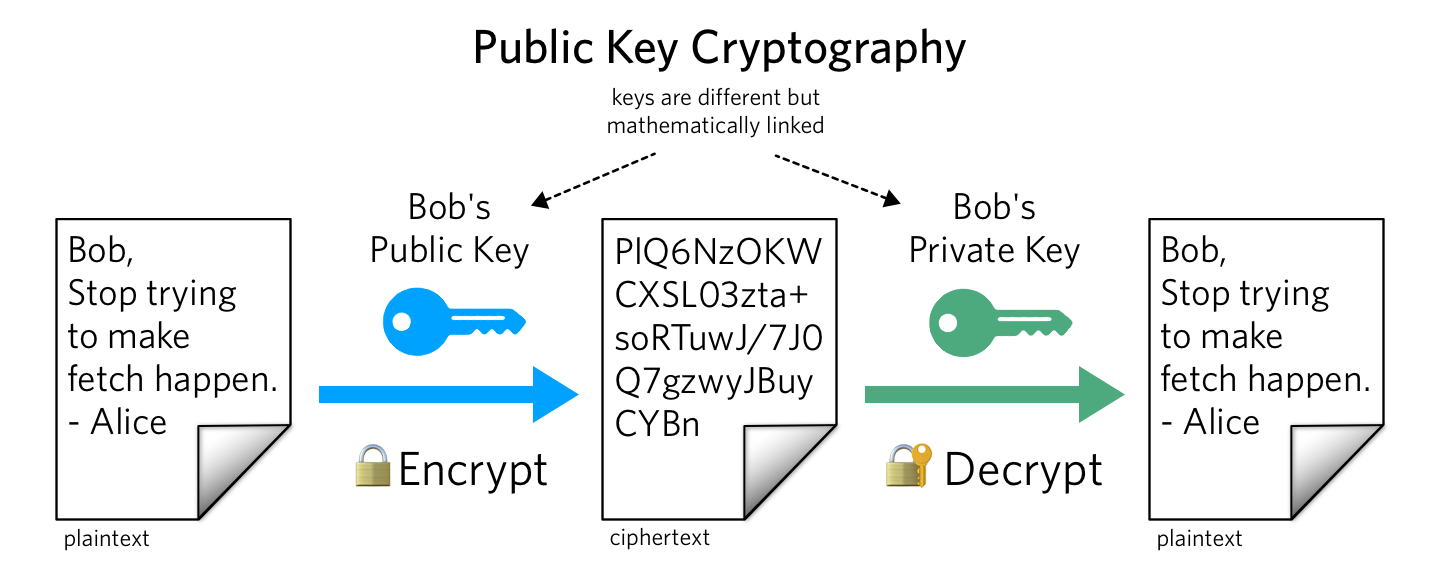Modular Algorithm Asymmetric Key Generation
Asymmetric(-key) encryption — also known as public-key encryption — uses two different keys at once: a combination of a private key and a public key. The private key is known only to you, while the public key can be published to be seen by anyone who wants to communicate securely with you. Aug 30, 2016 Wiki Symmetric Key Large Random Number Asymmetric Key Generation Algorithm Asymmetric cryptography, is any cryptographic system that uses pairs of keys: public keys that may be disseminated widely paired with private keys which are known only to the owner.
- Asymmetric Cryptography Algorithms
- Modular Algorithm Asymmetric Key Generation Download
- Modular Algorithm Asymmetric Key Generation Review
Key generation is the process of generating keys in cryptography. A key is used to encrypt and decrypt whatever data is being encrypted/decrypted.
A device or program used to generate keys is called a key generator or keygen.
Generation in cryptography[edit]
Modern cryptographic systems include symmetric-key algorithms (such as DES and AES) and public-key algorithms (such as RSA). Symmetric-key algorithms use a single shared key; keeping data secret requires keeping this key secret. Public-key algorithms use a public key and a private key. The public key is made available to anyone (often by means of a digital certificate). A sender encrypts data with the receiver's public key; only the holder of the private key can decrypt this data.
Since public-key algorithms tend to be much slower than symmetric-key algorithms, modern systems such as TLS and SSH use a combination of the two: one party receives the other's public key, and encrypts a small piece of data (either a symmetric key or some data used to generate it). The remainder of the conversation uses a (typically faster) symmetric-key algorithm for encryption.
Computer cryptography uses integers for keys. In some cases keys are randomly generated using a random number generator (RNG) or pseudorandom number generator (PRNG). A PRNG is a computeralgorithm that produces data that appears random under analysis. PRNGs that use system entropy to seed data generally produce better results, since this makes the initial conditions of the PRNG much more difficult for an attacker to guess. Another way to generate randomness is to utilize information outside the system. veracrypt (a disk encryption software) utilizes user mouse movements to generate unique seeds, in which users are encouraged to move their mouse sporadically. In other situations, the key is derived deterministically using a passphrase and a key derivation function.
Many modern protocols are designed to have forward secrecy, which requires generating a fresh new shared key for each session.
Classic cryptosystems invariably generate two identical keys at one end of the communication link and somehow transport one of the keys to the other end of the link.However, it simplifies key management to use Diffie–Hellman key exchange instead.
The simplest method to read encrypted data without actually decrypting it is a brute-force attack—simply attempting every number, up to the maximum length of the key. Therefore, it is important to use a sufficiently long key length; longer keys take exponentially longer to attack, rendering a brute-force attack impractical. Currently, key lengths of 128 bits (for symmetric key algorithms) and 2048 bits (for public-key algorithms) are common.
Generation in physical layer[edit]
Asymmetric Cryptography Algorithms

Wireless channels[edit]
A wireless channel is characterized by its two end users. By transmitting pilot signals, these two users can estimate the channel between them and use the channel information to generate a key which is secret only to them.[1] The common secret key for a group of users can be generated based on the channel of each pair of users.[2]
Optical fiber[edit]
A key can also be generated by exploiting the phase fluctuation in a fiber link.[clarification needed]

See also[edit]
- Distributed key generation: For some protocols, no party should be in the sole possession of the secret key. Rather, during distributed key generation, every party obtains a share of the key. A threshold of the participating parties need to cooperate to achieve a cryptographic task, such as decrypting a message.
References[edit]
- ^Chan Dai Truyen Thai; Jemin Lee; Tony Q. S. Quek (Feb 2016). 'Physical-Layer Secret Key Generation with Colluding Untrusted Relays'. IEEE Transactions on Wireless Communications. 15 (2): 1517–1530. doi:10.1109/TWC.2015.2491935.
- ^Chan Dai Truyen Thai; Jemin Lee; Tony Q. S. Quek (Dec 2015). 'Secret Group Key Generation in Physical Layer for Mesh Topology'. 2015 IEEE Global Communications Conference (GLOBECOM). San Diego. pp. 1–6. doi:10.1109/GLOCOM.2015.7417477.
Modular Algorithm Asymmetric Key Generation Download
Cryptography
Derrick Rountree, in Security for Microsoft Windows System Administrators, 2011
Asymmetric Encryption
Asymmetric encryption is also referred to as public key encryption. In asymmetric encryption, both the encrypting and decrypting systems have a set of keys. One is called the public key, and another is called the private key. If the message is encrypted with one key in the pair, the message can be decrypted only with the other key in the pair.
Asymmetric key algorithms are not quite as fast as symmetric key algorithms. This is partially due to the fact that asymmetric key algorithms are generally more complex, using a more sophisticated set of functions.
Modular Algorithm Asymmetric Key Generation Review
Asymmetric Key Algorithms
Asymmetric key algorithms aren't as widely used as their symmetric counterparts. So we'll just go over two of the big ones: Diffie-Hellman and RSA.
Diffie-Hellman: The Diffie-Hellman algorithm was one of the earliest known asymmetric key implementations. The Diffie-Hellman algorithm is mostly used for key exchange. Although symmetric key algorithms are fast and secure, key exchange is always a problem. You have to figure out a way to get the private key to all systems. The Diffie-Hellman algorithm helps with this. The Diffie-Hellman algorithm will be used to establish a secure communication channel. This channel is used by the systems to exchange a private key. This private key is then used to do symmetric encryption between the two systems.
RSA: It is the Rivest Shamir Adelman algorithm. RSA was developed in 1978. RSA was the first widely used asymmetric algorithms used for signing and encryption. It supports key lengths of 768 and 1,024 bits. The RSA algorithm uses a three-part process. The first part is key generation. The keys used in the RSA algorithm are generated using mathematical operations based on prime numbers. The second part of the process is encryption. This encryption is done using one of the keys in the key pair. The third part of the process is decryption. The decryption is done using the other key in the key pair.
Read full chapter